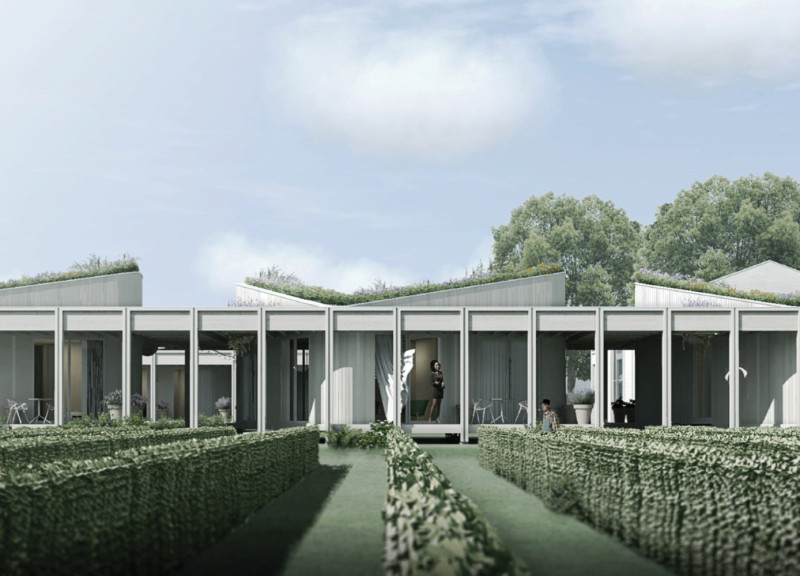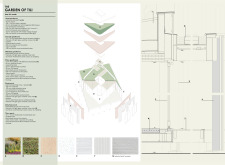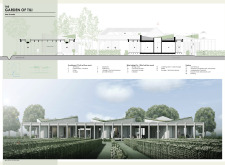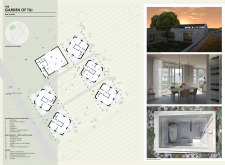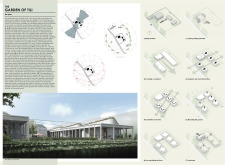5 key facts about this project
Material Palette and Sustainability Initiatives
One notable aspect of the Garden of Tili is its commitment to sustainable practices through a thoughtful selection of materials. The facades utilize a blend of 30% recycled plastics and painted brick, highlighting an innovative approach to materiality. The implementation of green roofs enhances biodiversity, while an efficient drainage system is integrated into the roofing structure to manage stormwater. The wooden decking made of composite timber, paired with polished concrete and natural stone flooring in the interiors, achieves a balance of functionality and aesthetics.
The project also integrates large windows that connect indoor spaces with the surrounding vineyards, optimizing natural light while minimizing reliance on artificial sources. This passive design approach reinforces energy efficiency and contributes to the overall environmental goals of the architecture.
Unique Design Characteristics
What sets the Garden of Tili apart from conventional projects is its approach to integrating vegetation within the architectural fabric. The incorporation of green roofs and living walls not only contributes positively to the local ecology but also enhances the thermal performance of the structure. This design features a keen attention to local cultural references, ensuring that the architecture pays homage to its geographical context.
The central courtyard serves as a pivotal element, promoting social interaction while maintaining distinct functional areas. The layout encourages movement and communal activities, such as wine tasting or leisurely strolls through the gardens, thereby stimulating a sense of community among visitors.
Engagement with Nature and Community
The Garden of Tili demonstrates how architecture can foster a deeper connection with the natural landscape through its design strategies. The seamless transitions between interior and exterior spaces allow occupants to engage more fully with their surroundings. Clarity in spatial organization combined with strategically placed outdoor areas offers opportunities for gathering and relaxation, enriching the overall visitor experience.
For a more comprehensive understanding of the Garden of Tili, including architectural plans, sections, designs, and ideas, viewers are encouraged to explore the project presentation further. An analysis of these elements will provide deeper insights into the architectural methodologies and design philosophies that shape this distinctive project.


